Welcome to the extraordinary world of harmony in guitar music – an elusive universe that I, as a seasoned musician and connoisseur, have found profound joy in exploring. When it comes to creating the fascinating sound of multi-part harmonized solos, nothing quite matches the edge of a guitar harmonizer pedal.
Picture this: A seemingly ordinary rehearsal, the chords flowing smoothly, but something is missing. I plug in my trusted harmonizer pedal and suddenly, I am no longer a lone guitarist but an entire guitar ensemble. The music swells, filling the space with layers of intricate, complementary melodies—a symphony from a single source. But how does this magic happen? Well, that’s a story we shall unearth together.
A guitar harmonizer pedal is not just a mere accessory; it’s the catalyst that has the surreal capability to transform your chords into a choir of harmonious sound. It is this transformation that not only enhances your guitar’s voice but also redefines your relationship with the instrument, pushing the boundaries of possibilities.
This guide is a deep-dive into harmony effects and the different aspects of guitar harmonizer pedals. So settle in – we’re about to embark on an enchanting journey into the realm where harmony is king.
What is a Guitar Harmonizer Pedal?
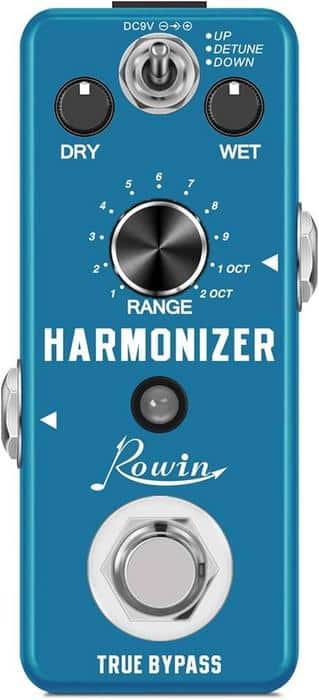
My first encounter with a guitar harmonizer pedal was a revelation akin to opening a new, unforeseen dimension of music. Let me, based on my own experiences and understanding, walk you through the intriguing nuances of this fabulous music tool.
So, what is a guitar harmonizer pedal? It’s essentially a device that adds extra notes to your original guitar signal, creating the illusion of multiple guitars playing at once. These pedals can generate simple diatonic intervals, full chords, or even intricate multi-part harmonized solos. Imagine a choir of guitar voices all emanating from your singular, humble guitar performance – that’s the magic of a harmonizer pedal.
Have you ever heard about the music tool that can add a choir of voices to your solo guitar performance? Sit tight to unravel the mystery!
The guitar harmonizer pedal offers an array of controls for shaping the harmony. Most models allow you to select the key you’re playing in and the interval at which it will harmonize. Some more sophisticated ones even let you choose between various modes, providing a diverse palette of harmonic options. Indeed, the diversity and range of sounds that these pedals can add to your guitar are truly staggering.
The most enrapturing characteristic of the harmonizer pedal is the ability to create multi-part harmonized solos with ease. Your simple, unaccompanied melody line can catapult into an intricate, layered solo that’s evocative of a group of guitarists jamming together harmoniously. It’s what us guitarists dream about!
However, while the harmonizer pedal is a fantastic tool, it’s also one that asks a lot from the player. The results you get are entirely dependent on your input. A poorly played note gets amplified into a discordant mess, so the harmonizer pedal impresses upon us the importance of playing clean, precise lines on our guitar. In many ways, it’s not just a pedal but a beloved mentor that encourages constant learning and growth.
My first encounter with the guitar harmonizer pedal opened up new avenues of creativity for me as a guitarist, and I sincerely hope it will for you too. Embrace the challenges it presents, revel in the unique, intricate soundscapes it allows you to create, and let this magic tool amplify your own distinct musical voice into a full, resounding chorus.
Harmonizer vs Pitch Shifter: Understanding the difference
What is a Pitch Shifter?
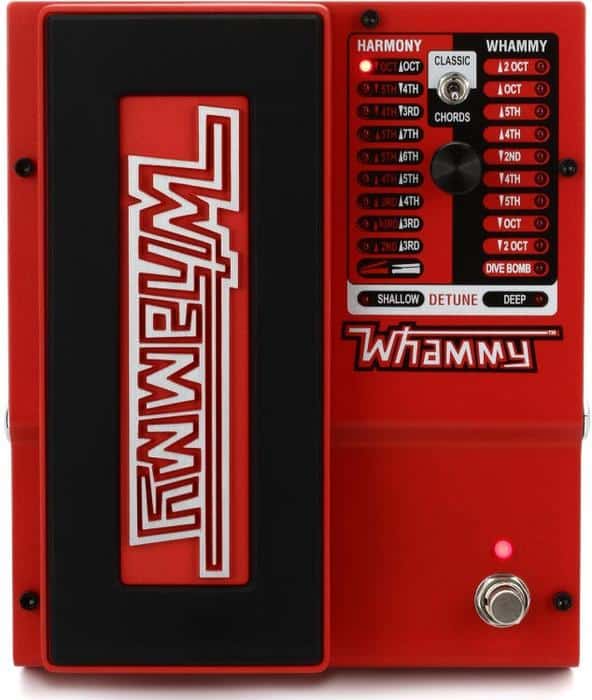
Having discussed harmonizers, it’s essential to delineate the role a pitch shifter plays in elevating my guitar setup. A pitch shifter allows musicians to alter, or ‘shift’ the pitch of the sound produced by the guitar, unlike the harmonizer that adds harmonies based on the original tone.
In my experience, an effective pitch shifter can create the detune effect, essential for that rich, thick, chorusing sound we all love. It’s like playing with two guitars at once. The shifts can be drastic, creating disorienting octave leaps, or subtle enough for vibes akin to 12-string guitars. Such flexibility contributes to the versatility of my music and is a remarkable asset.
Personally, I’ve found pitch shifting extremely helpful when I’m trying to emulate different music genres, achieve hard-to-reach notes or simply to add depth and warmth to my performances. While both harmonizer and pitch shifter can do wonders in enhancing your sound, understanding the difference is key to using them effectively. So, before you choose, remember that a pitch shifter can do everything the harmonizer can, but with an added ability to completely change the pitch, rounding out its contribution to the overall guitar setup.
Understanding the difference
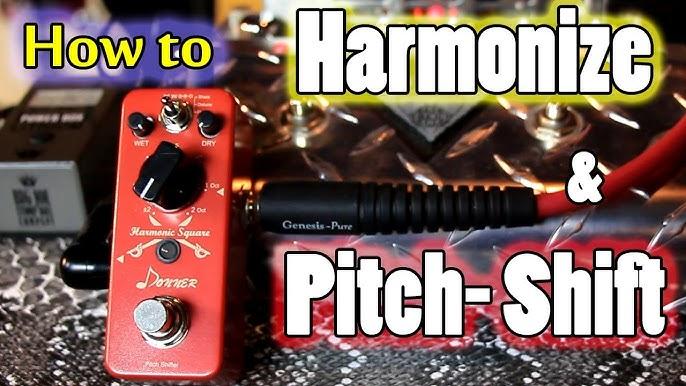
Throughout my music career, understanding the difference between a harmonizer and pitch shifter has played an instrumental role in shaping my sound. Distinguishing between the two isn’t always straightforward, as they can appear quite similar to the untrained eye. However, once you delve deeper, the differences become evident – and as a result, your musical vocabulary expands.
Harmonizer and pitch shifter: at their core, both function to alter the pitch of the input signal, but how they deliver the end result sets them apart. A harmonizer adds harmony to your original note, playing back the modified pitch in tandem with your initial playing, thus creating a harmonious blend. Conversely, a pitch shifter merely changes the input pitch without adding any harmonizing notes. This results in a sound that, while altered, remains singular in its delivery.
Choosing between a harmonizer and pitch shifter depends largely on your music genre, style, and personal preference. If you want to experiment with different harmonic layers or play ‘lead and rhythm’ simultaneously, a harmonizer pedal is your ideal choice. On the other hand, if you desire a more simplistic pitch alteration, perhaps for downtuning or adding subtle octaves, a pitch shifter can serve your purpose better.
As we move forward in this guide, we will delve deeper into each of these devices. Beyond these generic distinctions, the choice of a harmonizer vs pitch shifter has significant implications in terms of features and usability, all of which we’ll explore in the following sections of the guide – ‘What is a Pitch Shifter?’ and ‘Comparison of Top Harmonizer Pedals’.
Comparison of Top Harmonizer Pedals
EHX Harmonizer
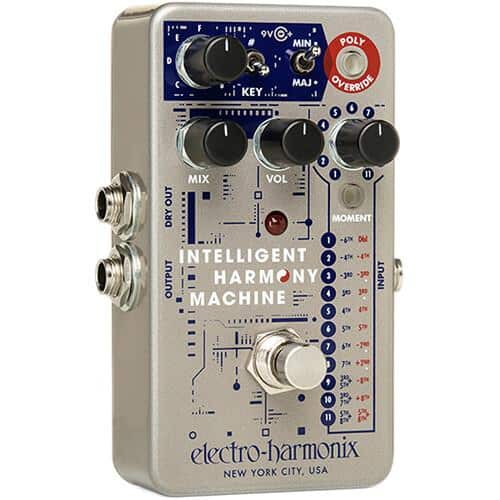
Moving on to the reliable EHX Harmonizer, this pedal holds a special place in my toolkit. Having accompanied me in countless studio sessions, I can vouch for its versatility and durability.
The EHX Harmonizer boasts an impressive range of features. Not only does it harmonize beautifully but also packs in an array of modifications, each contributing to a richer and fuller sound. This truly sets the pedal apart from its competition.
Playing with the EHX Harmonizer feels effortless and natural once you get the hang of it. The controls are intuitive, easy to adjust, and implement a sweeping range of pitch variations. It’s enough to transform any guitar session into an immersive experience.
Remarkably, the EHX harmonizer manages to deliver without compromising the quality of your original sound. Even with substantial pitch shifts, the tone remains clear and authentic. It’s this potent blend of versatility and authenticity that defines the EHX Harmonizer.
In comparison to other top-rated pedals within the same category, the EHX harmonizer holds its own. Its rich feature-set, sound quality, and ease-of-use, make it a trustworthy companion for both beginners and seasoned guitarists. It’s worth appreciating how confidently it contributes to our comparison of top harmonizer pedals.
As we continue with our journey through the world of harmonizer pedals, let’s explore the Digitech Harmonizer next. With unique features of its own, it’s interesting to see how it stacks up against the stellar EHX Harmonizer.
Digitech Harmonizer
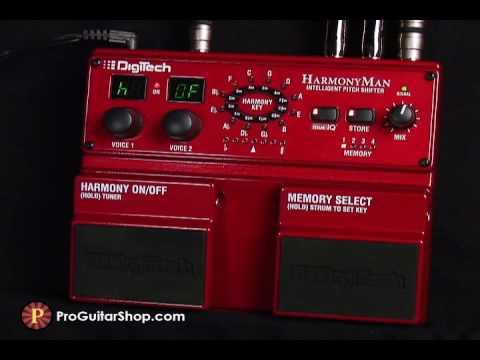
In the subsection ‘Comparison of Top Harmonizer Pedals,’ I can’t proceed without highlighting the Digitech Harmonizer’s role. As an invested user, I attest that no pedal has added more versatile harmonies to my performances than this. Based on my years of use, here’s a deep dive into this proficient, fun pedal’s fascinating world.
The Digitech Harmonizer, true to its name, excels in creating enchanting, precise harmonies. Its broad range of new harmonizing options has dramatically expanded my creative envelope, adding distinct layers of depth and richness to my music.
One compelling feature that sets the Digitech apart, in contrast to its competitors, is its impressive versatility. With the capacity to harmonize across multiple intervals and track complex chord progressions, it has continually outperformed my expectations. Beyond just adding parallel harmonies, Digitech’s flagship pedal has consistently demonstrated its effectiveness in intricate musical contexts.
Its robust build, user-friendly interface and studio-quality sound make it a worthy investment. Notably, it has significantly improved the dynamics of my performances, delivering harmonies full of character and warmth. The Digitech Harmonizer is indeed a reliable tool that has transformed my aural landscapes, adding myriad dimensions to my sonic expressions.
To conclude, the Digitech harmonizer’s superior sound quality, paired with its extensive harmonizing capabilities, make it an ideal choice for serious musicians. Its remarkable contribution to my own journey serves as a testament to its credibility and class. In the following section, we will delve into some worthwhile alternatives to top-tier pedals such as the Digitech, focusing particularly on budget-friendly options.
Alternative Harmonizer Pedals on a Budget
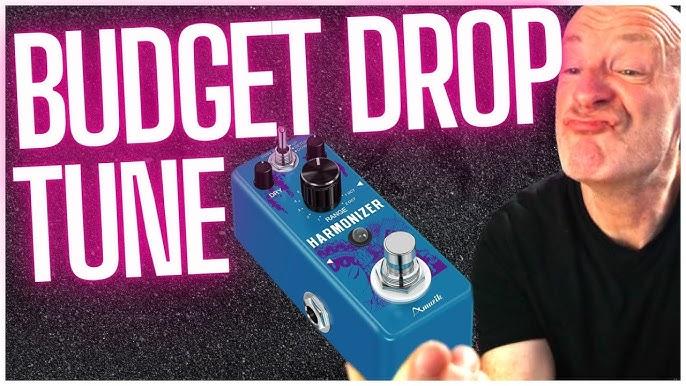
Throughout my musical journey, the term ‘budget’ has often sparked a surprising amount of skepticism. Many assume that costlier options necessarily produce superior outcomes. But years of tinkering with guitar pedals have taught me otherwise. Sometimes, breakthroughs and memorable outcomes come from the least expected places. Trust me when I say this – you don’t have to break your bank to get that perfect, harmonious sound you’re after.
Who says great sound enhancements have to burn a hole in your pocket? In fact, it’s possible to find some truly impressive and affordable alternatives. Let’s get to know some harmonizer pedals that have not only gently caressed my wallet but have also left a considerable impression on my music. These budget guitar pedals can be labeled as your best companions on your intrinsic musical journey.
For starters, the Behringer US600 Ultra Shifter/Harmonist is my go-to alternative harmonizer pedal. Its pitch shifting and harmony effects are remarkably good for its price. Despite being significantly cheaper than established brands like the EHX Harmonizer or Digitech Harmonizer, its quality and functionality certainly holds its ground. The pedal comes with a vast array of settings that give you full control over the produced effects, making it a truly budget-friendly and versatile companion for every guitar enthusiast!
Moving on, I cannot leave out the Mooer Pitch Box. Compact, sturdy, and easy-to-use, it’s another hidden gem among the budget guitar pedal realm. What’s truly impressive about the Pitch Box is its harmonizing capabilities. With a simple flick, you can bring in a harmony that’s up or down to the 3rd or 4th of your original tone. For its affordable price, the Pitch Box offers a jetpack of options, enabling you to explore different voice combinations and pro-grade harmonies.
In my years of playing around with guitar pedals, I’ve also met with the TC Electronic Quintessence Harmonizer. Its slick design and intuitive control layout make it a breeze to use, but it’s the sounds that this pedal delivers which makes it truly stand out. With customized harmonies and multiple voicings, the Quintessence Harmonizer packs a lot of bang for the buck. And just because it’s budget-friendly doesn’t mean it skimps on quality; helped me create some truly enchanting pieces.
To put things into perspective, incorporating these alternative harmonizer pedals into my rig has been an enlightening experience. They taught me that value isn’t just a price tag, but an optimal balance of cost, functionality, and how much it can contribute to my musical expression. I hope our journey together through these affordable alternatives, aids you to craft a personalised and mellifluous universe of sounds, one that indeed speaks louder than words.
Up next, let’s explore my final buying recommendations. Prepare to dive deeper into the world of harmonizer pedals!
Final Buying Recommendations
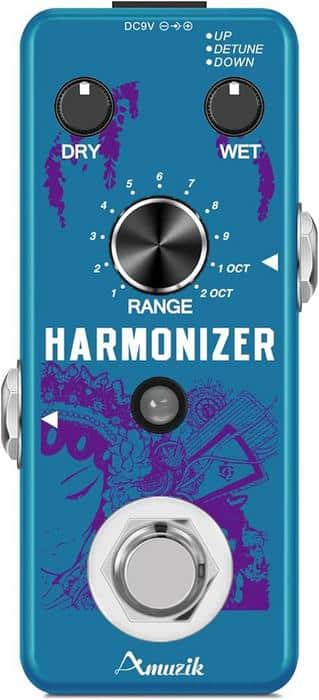
After soaking in the nuanced details of what makes a harmonizer pedal a game-changer, and carefully evaluating the various options at hand, it’s time to make that pivotal selection. Remember, choosing the right pedal is like finding the perfect partner for your musical journey.
Ever wonder how pro musicians select their gear? It’s not as complex as you might think! Let’s decode the secrets together. The first and foremost consideration is always the nature and style of music you play. The harmonizer pedal you choose should enhance your sound, not alter its intrinsic quality. From my experience, I have distilled this knowledge to help you select the most suitable guitar pedals for harmonizing.
A key quality to look for in a harmonizer pedal is true bypass. When the harmonizer pedal isn’t active, your signal should pass directly—untouched and unaltered—through the unit. This maintains the authenticity and richness of your original sound, alongside introducing harmony when desired.
Next, size matters. For guitarists with an already crowded pedalboard, a mini guitar pedal that is compact, yet powerful in performance, can be a godsend. So, pay close attention to the size of the pedal while making your selection.
Consider opting for a multi-effect guitar pedal if you covet versatility and love to experiment with your sound. These pedals can offer various effects along with harmony, providing a broad palette of sonic options to explore. Investing in one could elevate your music to unprecedented heights, coloring your performances with enthralling harmonies and textures.
And finally, price. High-quality gear often comes with a hefty price tag. Nevertheless, with the explosion of indie manufacturers and evolution of technology, it’s possible to find affordable alternatives without compromising on quality. If you’re just dipping your toes into musical waters or are on a tight budget, consider exploring alternative harmonizer pedals. There’s a whole range of options that balance quality with affordability.
Playing the guitar isn’t just about frets and strings—it’s about creating an enduring sound that resonates with your listeners. It took me years of performing and profound experience to realize that the right harmonizer pedal can be the defining edge. Trust me when I say it’s an investment worth every penny—it’s the ‘cherry on top’ your guitar music has been missing.
So, before you wrap up, ponder these final recommendations. Take your time, revisit your choices and settle for the one that fits you like a charm. The world of guitar pedals for harmonizing is a magical realm, ready to amplify your music and echo your unique expression.
FAQs
What is a harmonizer pedal?
How does a harmonizer pedal work?
What styles of music can benefit from harmonizer pedals?
Are there different types of harmonizer pedals available?
Conclusion
Have you pieced together the puzzle of harmonizing your guitar music successfully? Let’s summarize the journey and see how far we’ve come! Harmonizer pedals, with their versatile guitar effects and fixed harmony abilities, have taken centre-stage throughout our discourse.
From differentiating the harmonizer and pitch shifter, to exploring the best options available, we’ve embarked on an enlightening journey. This powerful device can become a guitarist’s best friend, draping simple melodies in rich, symphonic layers. Like the robust EHX Harmonizer or the affordable yet potent Digitech models, to lesser known but value-for-money budget alternatives.
It’s been a pleasure sharing insights from my love affair with harmonizer pedals. They’ve undoubtedly become my go-to for broadening sonic spaces in solos – and they could certainly invigorate your music too. Whether you’re just starting your journey or you’re a seasoned musician looking for greater depth, there’s a harmonizer pedal out there for you.
Let’s encapsulate the essence of our discussion as we conclude this journey into the symphony of harmonized guitar solos. You’ve embraced the beautiful complexity of these devices, so go forth and carry the harmony of your guitar into the world with pride and prowess!